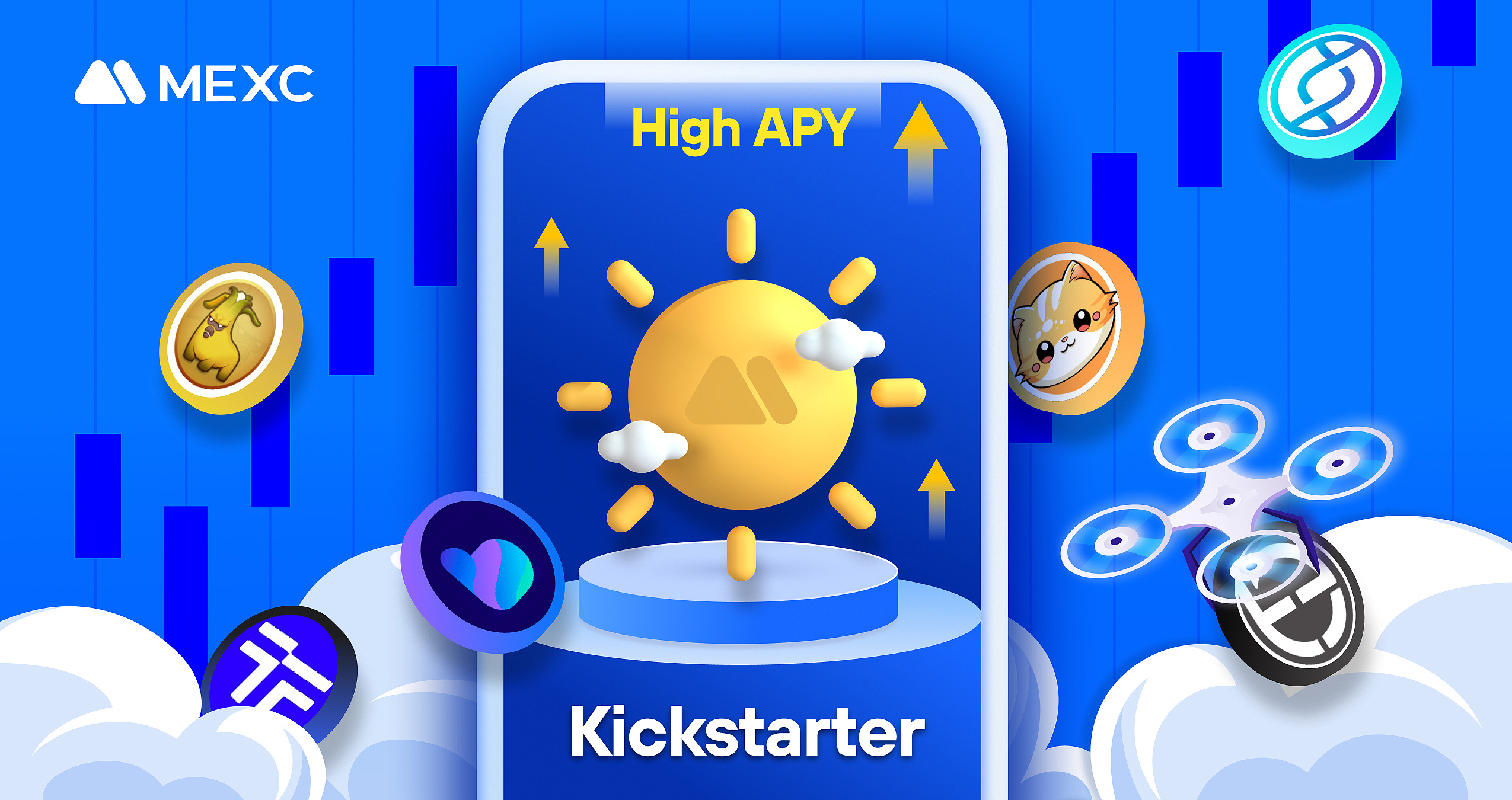Introduction to Scalping
Scalping is a trading style that involves making numerous short-term trades throughout the day with the aim of securing small profits from each price movement. This method is popular among traders in the cryptocurrency, forex, and stock markets due to its dynamism and potential for quick earnings. In the cryptocurrency world, where volatility can reach tens of percent daily, scalping becomes particularly attractive for those willing to engage in intensive trading.

Table of Contents
Scalping requires high concentration, quick decision-making, and a deep understanding of the market. However, it is accessible not only to professionals but also to beginners, provided they master basic strategies and tools. Platforms like MEXC, offer ideal conditions for cryptocurrency scalping due to low fees, high liquidity, and a wide selection of trading pairs.
In this article, we will discuss what scalping is, how it works in different markets, which strategies and indicators to use, and how to start trading with minimal risks. You will learn how to choose the right platform, set up your terminal, and apply practical tips for successful scalping. Whether you want to trade cryptocurrencies, stocks, or forex, this guide will help you take the first steps and achieve stable results.
Advantages and Risks of Scalping
Advantages of Scalping
- Quick profit. Scalpers profit from small price movements, allowing them to earn income even in low volatility conditions.
- Flexibility. Scalping is suitable for different markets: cryptocurrencies, stocks, forex, and futures.
- Minimal news impact. Short-term trades are less affected by fundamental factors such as economic reports.
- Accessibility for beginners. With a minimal investment ($50–100), you can start trading on platforms like MEXC.
- High liquidity in the crypto market. Cryptocurrencies like BTC and ETH have high liquidity, which is ideal for scalping.
Risks of Scalping
- High intensity. Scalping requires constant attention and quick responses, which can lead to stress.
- Fees. Frequent trades increase commission costs, especially on platforms with high fees.
- Risk of losses. The slightest mistake in analysis or a delay in order execution can lead to losses.
- Technical issues. Internet or platform outages can disrupt trades.
- Emotional strain. Impulsive decisions often lead to losses.
Tip: To minimize risks, start with a demo account on MEXC and practice with small amounts.
How Scalping Works in Cryptocurrencies, Stocks, and Forex
Scalping is based on using short-term price fluctuations that occur within minutes or even seconds. A trader quickly opens and closes positions, capturing profits in the range of 0.1–1% per trade. Let’s look at the features of scalping in different markets.
Cryptocurrencies
The cryptocurrency market is ideal for scalping due to its high volatility and 24/7 trading. For example, on MEXC you can trade BTC/USDT or ETH/USDT, where prices can fluctuate by 1–5% per hour. Scalpers use spot trading or futures with low leverage (1x–5x) to increase returns.
Features:
- High liquidity of top pairs (BTC, ETH, SOL).
- Low fees on MEXC (0–0.02% per trade).
- Opportunity for automation through bots.
Stocks
In the stock market, scalping is popular among day traders trading shares of large companies (Apple, Tesla). Traders use short-term movements caused by news or market trends.
Features:
- Requires a broker with low commissions and fast order execution.
- Limited trading hours (unlike the crypto market).
- Less volatility compared to cryptocurrencies.
Forex
Forex is a classic market for scalping, where traders trade currency pairs (EUR/USD, GBP/JPY). High liquidity and minimal spreads make forex attractive to scalpers.
Features:
- Use of leverage (up to 1:500).
- The importance of low spreads and fast execution.
- Popular time frames: M1, M5.
Scalping Strategies for Beginners
Scalping requires a clear strategy to minimize risks and increase the chances of profit. Here are some approaches suitable for beginners.
Trading on Support and Resistance Levels
How it works: Identify key levels where the price often reverses (support – lower level, resistance – upper level). Open trades on rebounds or breakouts of the level.
Example:
- For the BTC/USDT pair, the support level is at $60,000.
- If the price approaches $60,000 and rebounds, buy with a target of $60,200.
- Set a stop-loss at $59,900.
News Trading
How it works: Use short-term spikes in volatility caused by news (e.g., decisions by the Fed or token listings). Open positions immediately after news release.
Example:
- MEXC announces listing of a new token.
- Buy the token in the first minutes of trading, securing profits on a 2–5% rise.
Trend Scalping
How it works: Determine the short-term trend (upward or downward) and open trades in its direction. Use indicators such as moving averages (MA).
Example:
- On the M5 timeframe, the ETH/USDT price is moving up.
- Buy on pullbacks to the 20-period MA, securing profits through 10–20 points.
Momentum Scalping
How it works: Catch sharp price movements (impulses) caused by large orders. Use volume indicators or order book.
Example:
- There is a spike in volume on the SOL/USDT pair on MEXC.
- Buy on the impulse and sell at 0.5–1%.
Tip: For beginners, it’s better to start trading based on support and resistance levels, as this strategy is simpler and less risky.
Tips for Choosing a Broker for Scalping
Choosing a platform is critically important for scalping, as the speed of order execution and fees directly impact profit. Here are the key criteria:
- Low fees. Choose exchanges with minimal fees.
- High liquidity. The platform should support popular pairs with narrow spreads.
- Fast execution. Delays in order execution can lead to losses.
- Analysis tools. Access to charts, indicators, and order book is essential.
- Demo account. Allows practicing without risk.
- API support. For automation through trading bots.
Best Scalping Strategies for Traders: A Step-by-Step Guide
What is Scalping in Trading
Scalping is a strategy where a trader makes dozens or hundreds of trades a day, capturing profit from minimal price movements. The main goal is to accumulate a small income from each trade, which in total provides significant profit.
What Strategies Exist
- In cryptocurrencies: Trading by levels, impulse scalping, arbitrage between exchanges.
- In forex: News-based scalping, spread-based trading, using moving averages.
- In stocks: Trading at market open, news-based scalping for companies.
What Indicators Help with Scalping
- Moving Averages (MA): Show the direction of the trend. Use EMA 9 and EMA 21 on M1/M5.
- RSI (Relative Strength Index): Determines overbought/oversold conditions. Values above 70 or below 30 signal a reversal.
- Bollinger Bands: Show volatility. Trade on the rebound from the bands.
- Volume: High volume confirms the strength of the momentum.
- MACD: Helps identify trend changes.
Example Trading Strategy
Strategy: Scalping using EMA and RSI in cryptocurrency
- Setup:
- Open the BTC/USDT chart on MEXC в TradingView.
- Timeframe: M5.
- Indicators: EMA 9, EMA 21, RSI (period 14).
- Entry conditions:
- Buy: EMA 9 crosses EMA 21 upwards, RSI above 50.
- Sell: EMA 9 crosses EMA 21 downwards, RSI below 50.
- Take profit: 0.5–1% from the entry price.
- Stop-loss: 0.3% from the entry price.
- Example:
- BTC/USDT price = $60,000.
- Buy when EMA crosses and RSI > 50.
- Take profit: $60,300.
- Stop-loss: $59,820.
How to Minimize Risks
- Use a stop-loss. Limit losses to 0.2–0.5%.
- Trade liquid assets. Choose pairs like BTC/USDT or ETH/USDT.
- Control your emotions. Avoid impulsive trades.
- Limit leverage. For beginners, it’s better to use 1x–3x.
- Check the news. Stay updated with announcements on CoinMarketCap.
Indicators for Scalping: How to Choose the Best for Trading in Cryptocurrencies and Stocks
What Indicators are Most Effective
- EMA (Exponential Moving Average): Responds quickly to price changes. Use EMA 9 and EMA 21 for M1/M5.
- RSI: Helps find reversal points. Set the period to 14.
- Stochastic Oscillator: Shows overbought/oversold conditions. Use settings 14,3,3.
- VWAP (Volume Weighted Average Price): Shows the average price accounting for volume. Popular in stocks.
- ATR (Average True Range): Measures volatility for setting stop-losses.
How to Use Indicators in TradingView
- Open TradingView and select the chart (for example, BTC/USDT).
- Add indicators through the ‘Indicators’ panel:
- EMA: 9 and 21.
- RSI: period 14.
- Bollinger Bands: period 20, deviation 2.
- Set the timeframe to M1 or M5.
- Analyze signals:
- Buy: EMA 9 > EMA 21, RSI > 50, price at the lower Bollinger Bands limit.
- Sell: EMA 9 < EMA 21, RSI < 50, price at the upper Bollinger Bands limit.
Indicators for Scalping in Forex
- MACD (settings 12,26,9): Confirms the trend.
- Pivot Points: Show support/resistance levels.
- Fibonacci Retracement: Helps to find entry points on pullbacks.
Settings for Ideal Scalping
- Timeframe: M1–M5 for cryptocurrencies, M5–M15 for stocks.
- Indicators: Combination of EMA, RSI, and Bollinger Bands.
- Stop-loss: 0.2–0.5% of the entry price.
- Take profit: 0.5–1% from the entry price.
Recommendations on Indicators for Different Markets
- Cryptocurrencies: EMA, RSI, Volume.
- Stocks: VWAP, Bollinger Bands, Stochastic.
- Forex: MACD, Pivot Points, ATR.
How to Learn to Scalp: Complete Course on Scalping for Beginners
What is Scalping and What Types of Strategies Exist
Scalping is a high-speed trading style where a trader earns on minimal price changes. Types of strategies:
- Manual scalping: The trader analyzes the market independently.
- Automated: Using trading bots.
- Momentum: Trading on sharp movements.
- Counter-trend: Trading against the trend on pullbacks.
How to Learn the Basics of Scalping from Scratch
- Study the theory. Read articles on MEXC Learn about trading and indicators.
- Master the terminal. Use TradingView or the integrated MEXC terminal.
- Practice on a demo account. Test strategies without risk.
- Analyze trades. Keep a trader’s journal to identify mistakes.
How to Choose a Terminal for Scalping
- MEXC: Integration with TradingView, low fees, API support.
- MetaTrader 4/5: Popular for forex, supports indicators and bots.
- Thinkorswim: Suitable for stocks, offers advanced tools.
Practical Tips
- Trade during high volatility hours (8:00–11:00 UTC for cryptocurrencies).
- Use hotkeys for quick opening/closing of positions.
- Limit trading time (1–2 hours a day) to avoid fatigue.
- Stay updated with news on CoinMarketCap.
Where to take courses on scalping
- YouTube: Channels ‘Trader from Scratch’, ‘Crypto Scalper’ (in Russian).
- Courses from exchanges: MEXC Learn
- Paid courses: Udemy, Coursera (look for trading courses).
Simple Scalping: How to Start Trading with Minimal Risks and Maximum Profits
Basics of scalping and simple strategies.
For beginners, it’s better to start with a simple strategy, such as trading based on support and resistance levels. This minimizes risks and requires basic knowledge.
How to set up the terminal and indicators
- Register on MEXC and open a chart in TradingView.
- Set up the indicators: EMA 9, EMA 21, RSI.
- Choose the M5 timeframe.
- Set a stop-loss and take-profit.
Scalping in futures and stocks
- Futures: Use low leverage (1x–3x) on MEXC.
- Stocks: Trade in the first hours after the market opens.
What is important to consider
- Trade only liquid assets.
- Avoid trading during low volatility.
- Control your emotions and stick to your plan.
Practical steps
- Register on MEXC and fund your account ($50–100).
- Choose a pair (for example, BTC/USDT).
- Practice on a demo account.
- Start with 1–2 trades a day, aiming for 0.5–1% profit.
- Analyze the results and scale your volumes.
Conclusion
Scalping is a dynamic and profitable trading style that suits both beginners and professionals. With the right strategy, indicators, and a platform like MEXC, you can start earning with minimal investments. The key to success is discipline, practice, and risk management. Start with simple strategies, such as trading based on levels, use indicators (EMA, RSI, Bollinger Bands), and gradually move to advanced techniques.
For learning, use resources like MEXC Learn, TradingView, and YouTube channels. Practice on a demo account, analyze your trades, and avoid emotional decisions. Scalping opens doors to the world of trading, and with MEXC you will have all the tools for a successful start. Start today — and may your trades be profitable!
Join MEXC and Get up to $10,000 Bonus!
Sign Up


